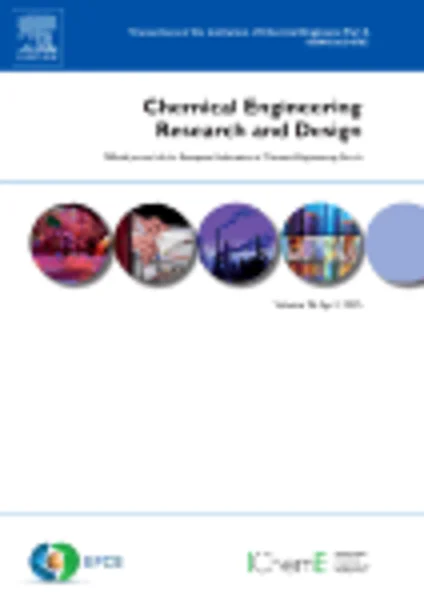-
simulation guided-design of a microfluidic thermal reactor for polymerase chain reaction
جزئیات بیشتر مقاله- تاریخ ارائه: 1392/07/24
- تاریخ انتشار در تی پی بین: 1392/07/24
- تعداد بازدید: 1003
- تعداد پرسش و پاسخ ها: 0
- شماره تماس دبیرخانه رویداد: -
microfluidics have been developed as a major platform for chemical/biochemical reactions because of several major advantages: low reagent usage, fast reaction rate, less labor involved to minimize the contamination, and the potential to achieve a “lab-on-a-chip”. one such application will be the polymerase chain reaction (pcr) which requires repeated thermal cycling. one cycle includes 90–95 °c for denaturation, 50–70 °c for renaturation, and 70–75 °c for extension to amplify the dna fragments of interest. two numerical simulations based on finite element analysis (fea) were conducted: (1) a device simulation was realized to understand the temperature uniformity of the micro-channels on a polydimethylsiloxane (pdms)-glass format; (2) a single micro-channel simulation was realized to understand the temperature distribution of the flowing reagent inside the micro-channel, which led to elucidate the impact of the thermal convection to the temperature distribution of the reagent. the device simulation results show three distinct and uniform temperature zones on a designed hybrid continuous flow pcr (cfpcr) device. for the micro-channel simulation, results show that the dwell time of the chemical reagents at each target temperature zone at higher flow velocities is reduced. it also shows the importance of the flowing reagent's thermal convection to the temperature distribution of a microfluidic thermal reactor. to verify the simulation results, a hybrid, 40-cycle continuous flow pcr (cfpcr) was designed and fabricated for experiments using photolithography and polydimethylsiloxane (pdms) casting techniques. a 99 bp lambda dna fragment was successfully amplified on this hybrid device at different flow velocities from 4 mm/s to 20 mm/s. this confirms the (1) success of the simulation-guided design for a microfluidic thermal reactor and that (2) insufficient dwell time for the pcr reaction at higher flow velocities lead to a lower amplification efficiency.
مقالات جدیدترین رویدادها
-
استفاده از تحلیل اهمیت-عملکرد در ارائه الگوی مدیریت خلاقیت سازمانی و ارائه راهکار جهت بهبود
-
بررسی تاثیر ارزش وجوه نقد مازاد بر ساختار سرمایه شرکت های پذیرفته شده در بورس اوراق بهادار تهران
-
بررسی تأثیر سطح افشای ریسک بر قرارداد بدهی شرکت های پذیرفته شده در بورس اوراق بهادار تهران
-
بررسی تأثیر رتبه بندی اعتباری مبتنی بر مدل امتیاز بازار نوظهور بر نقد شوندگی سهام با تأکید بر خصوصی سازی شرکت ها
-
تأثیر آمیخته بازاریابی پوشاک ایرانی بر تصویر ذهنی مشتری پوشاک ایرانی (هاکوپیان)
-
مقایسه تغییرات همودینامیک ناشی از پروپوفول و تیوپنتال حین القای بیهوشی و لوله گذاری نای
-
فن شناسی و سبک شناسی حوضخانه های مساجد ایرانی اسلامی (نمونه موردی: حوضخانه های مساجد شهرستان مهاباد)
-
ارائه الگوریتم الکترومغناطیس برای مساله انتخاب تامین کننده چند هدفه چند محصولی با در نظر گرفتن تخفیف و رویکرد فازی
-
experimental and numerical study on air cores for cylindrical tank draining
-
the inspection of dimensions and geometry of disks on their dynamic stiffness using the cone model
مقالات جدیدترین ژورنال ها
-
مدیریت و بررسی افسردگی دانش آموزان دختر مقطع متوسطه دوم در دروان کرونا در شهرستان دزفول
-
مدیریت و بررسی خرد سیاسی در اندیشه ی فردوسی در ادب ایران
-
واکاوی و مدیریت توصیفی قلمدان(جاکلیدی)ضریح در موزه آستان قدس رضوی
-
بررسی تاثیر خلاقیت، دانش و انگیزه کارکنان بر پیشنهادات نوآورانه کارکنان ( مورد مطالعه: هتل های 3 و 4 ستاره استان کرمان)
-
بررسی تاثیر کیفیت سیستم های اطلاعاتی بر تصمیم گیری موفق در شرکتهای تولیدی استان اصفهان (مورد مطالعه: مدیران شرکتهای تولیدی استان اصفهان)
-
سنجش اعتماد اجتماعی و عوامل مؤثّر برآن، دربین کشاورزان شالیکار شرق استان گیلان (مورد مطالعه: آستانه اشرفیه)
-
فرآیند پیش نگری ، تاثیرات آن در عکاسی فتوشیمیایی و نحوه احیاء آن در عکاسی دیجیتال
-
بررسی تأثیر بازارگرایی و ابعاد آن بر عملکرد شرکتهای بیمه پاسارگاد در شهر تهران
-
سنجش نگرش و ادراکات دانشجویان و دانش آموختگان کارشناسی ارشد نسبت به نقش برنامه های درسی رشته تحصیلی خود در کسب مهارت های شغلی، انتظارات شغلی و شانس اشتغال آنها
-
بررسی عوامل تاثیر گذار بر تمایل به ادامه کسب و کار اینترنتی در بنگاه های کوچک و متوسط استان تهران




سوال خود را در مورد این مقاله مطرح نمایید :